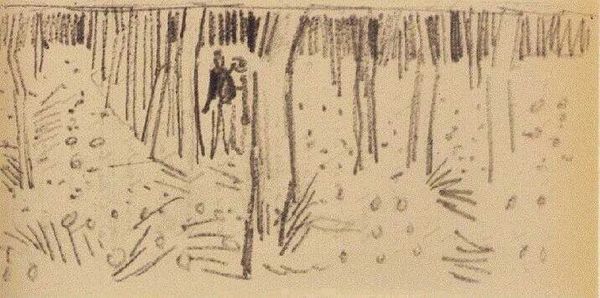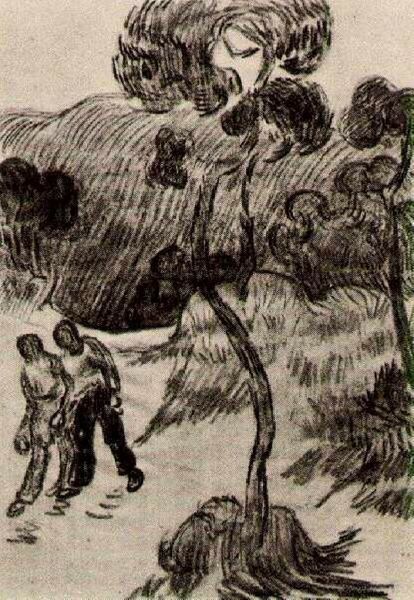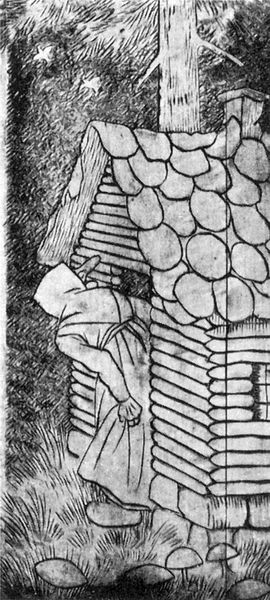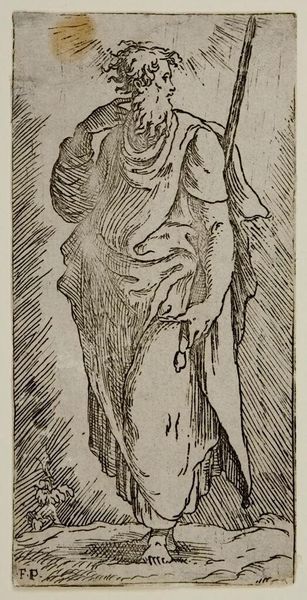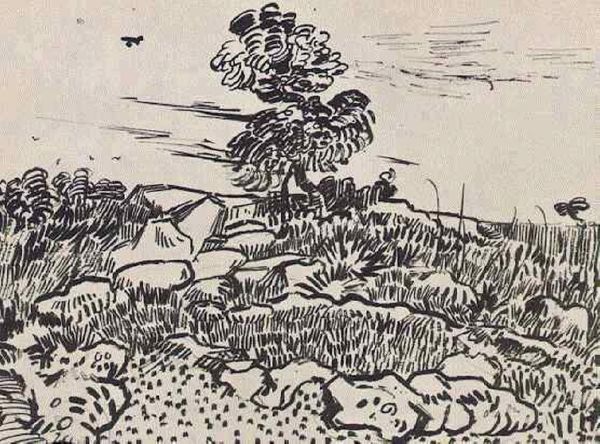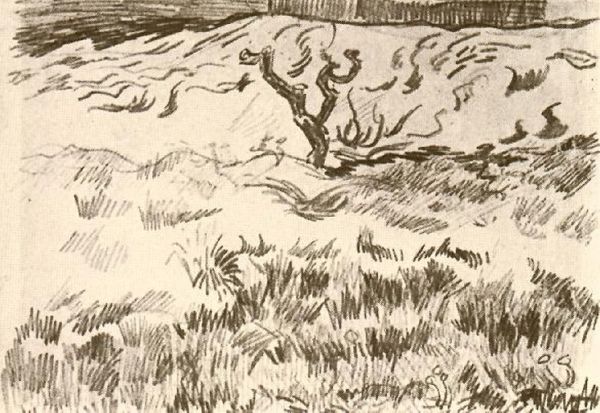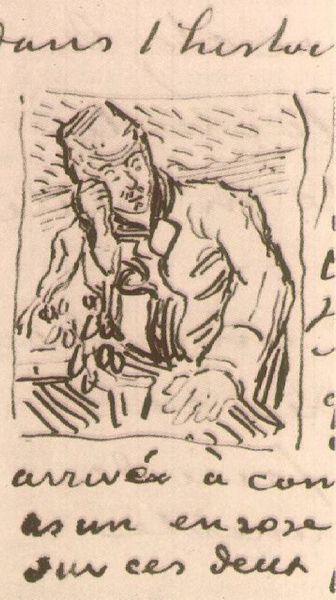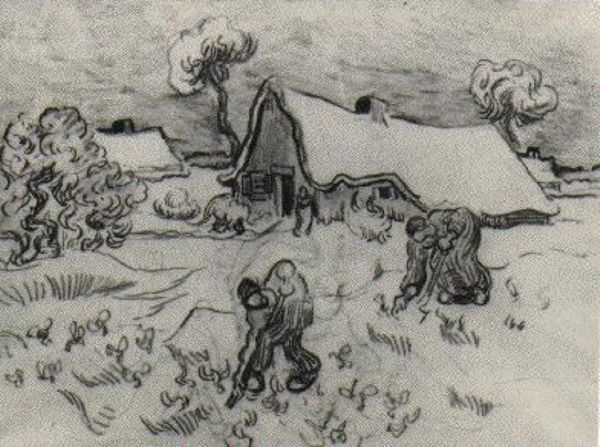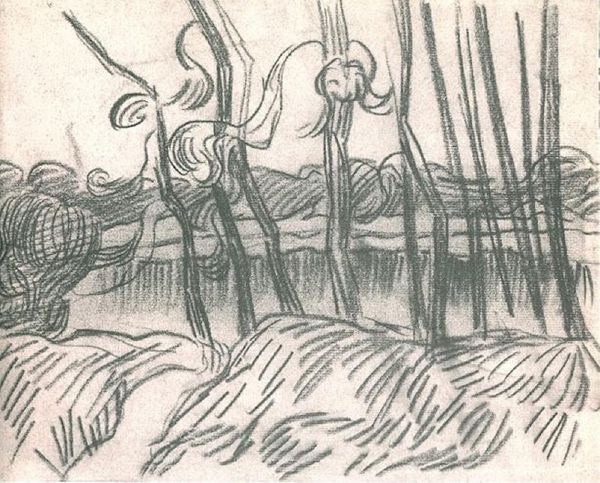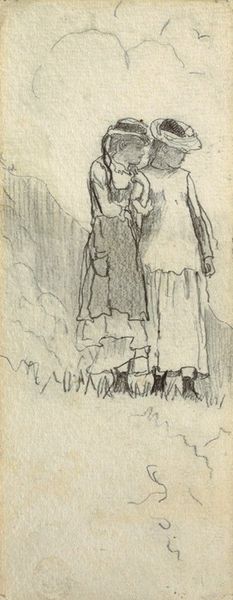
drawing, paper, ink
#
drawing
#
impressionism
#
pen sketch
#
landscape
#
figuration
#
paper
#
ink
#
sketch
#
line
#
post-impressionism
Copyright: Public domain
Editor: This pen and ink drawing from 1890 by Vincent van Gogh, titled "A Woman Picking Up a Stick in Front of Trees," has such a stark, almost desolate feeling to it. The woman seems hunched and isolated in the landscape. How do you interpret this work? Curator: The sketch embodies Van Gogh’s post-impressionist exploration of labor and the human condition. He depicts a peasant woman engaged in simple yet demanding work. How might her bent posture speak to broader societal forces at play during that time? Think about the rigid class structures and the grueling realities for rural workers. The lines themselves, so urgent and repetitive, almost seem to mimic the endless, cyclical nature of her labor. Does the lack of distinct facial features impact how we see her? Editor: Yes, the lack of features makes her seem like a representation of all working-class women, rather than a specific individual. She could be anyone struggling against difficult circumstances. Do you think this was intentional? Curator: Absolutely. Van Gogh's focus on the posture, the clothing, and the act of collecting suggests he wanted us to see her as part of a larger socio-economic picture. Consider also the composition; she's small in relation to the landscape. In what ways might this further emphasize the theme of individual struggle against larger systems, not just natural ones? Editor: That makes sense. Seeing her size against the trees makes her work seem almost futile in comparison to nature's grandeur. The sketch really brings the social and historical context to life in an interesting way. Curator: Precisely. Van Gogh's drawings are more than just landscapes, they become a form of social commentary that questions existing power structures and celebrates the dignity of work.
Comments
No comments
Be the first to comment and join the conversation on the ultimate creative platform.
